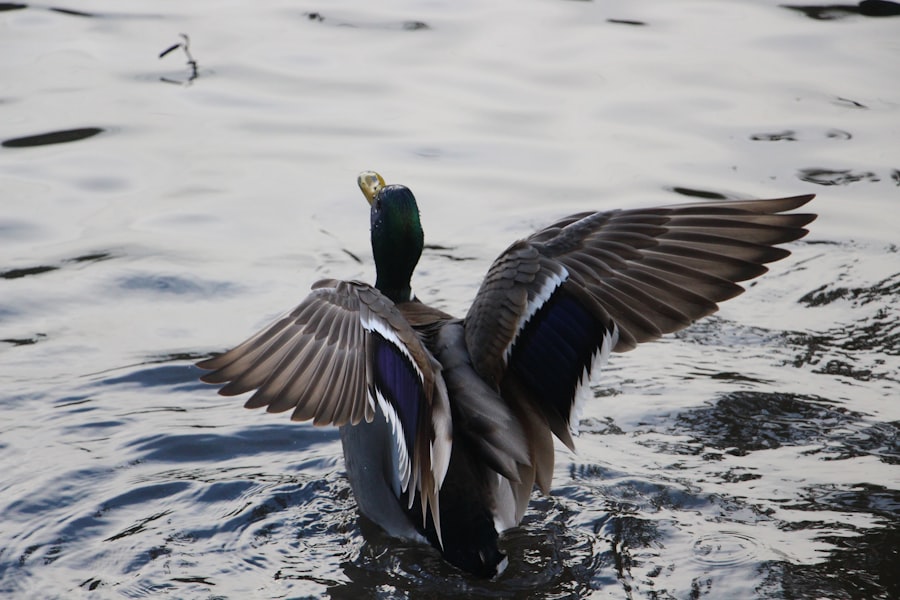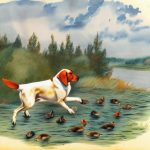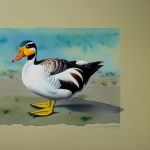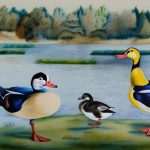Ducks are a diverse group of waterfowl that come in a wide variety of breeds, each with its own unique characteristics and traits. From domestic breeds raised for meat and eggs to wild species found in natural habitats, ducks have been an important part of human culture and ecology for centuries. The domestication of ducks has led to the development of numerous breeds that are prized for their meat, eggs, and ornamental qualities. In addition to domestic breeds, there are also rare and endangered duck breeds that are in need of conservation efforts to ensure their survival. Understanding the different types of duck breeds and their importance is essential for appreciating the diversity and value of these fascinating birds.
Table of Contents
Key Takeaways
- There are over 40 different duck breeds, each with unique characteristics and traits.
- Popular domestic duck breeds include the Pekin, Mallard, and Khaki Campbell, known for their egg-laying abilities and friendly dispositions.
- Rare and endangered duck breeds, such as the Aylesbury and Silver Appleyard, require conservation efforts to prevent extinction.
- Wild duck species, like the Wood Duck and Mandarin Duck, are known for their vibrant plumage and natural habitats in wetlands and marshes.
- Breeding and conservation efforts are crucial in maintaining the diversity of duck breeds and preserving their genetic heritage for future generations.
Popular Domestic Duck Breeds
Among the most popular domestic duck breeds are the Pekin, Rouen, and Khaki Campbell. The Pekin duck is a large, white breed that is known for its fast growth and excellent meat production. It is also a prolific egg layer, making it a popular choice for small-scale poultry farmers. The Rouen duck, on the other hand, is prized for its beautiful plumage, which features a striking combination of iridescent green and deep chestnut. While not as prolific as the Pekin in terms of egg production, the Rouen is valued for its ornamental qualities and is often kept for exhibition purposes. The Khaki Campbell is a breed that was developed specifically for egg production, with hens capable of laying up to 300 eggs per year. Its efficient egg-laying abilities make it a favorite among backyard poultry enthusiasts.
In addition to these breeds, there are also popular ornamental duck breeds such as the Crested and Call ducks. The Crested duck is known for the distinctive crest of feathers on its head, which gives it a unique and charming appearance. The Call duck, on the other hand, is one of the smallest domestic duck breeds and is often kept for its diminutive size and adorable appearance. These popular domestic duck breeds showcase the diversity of traits and characteristics that have been selectively bred over generations to meet various human needs and preferences.
Rare and Endangered Duck Breeds
While popular domestic duck breeds are well-known and widely available, there are also rare and endangered duck breeds that are in need of conservation efforts to prevent their extinction. One such breed is the East Indies duck, which is known for its striking black plumage with iridescent green highlights. This breed is considered critically endangered, with only a few hundred individuals remaining worldwide. Efforts are underway to preserve and protect the East Indies duck through breeding programs and conservation initiatives.
Another rare duck breed is the Silver Appleyard, which was developed in England in the mid-20th century. This breed is prized for its dual-purpose qualities, being valued for both meat and egg production. Despite its excellent attributes, the Silver Appleyard is considered rare and in need of conservation due to declining population numbers. Conservation organizations and dedicated breeders are working to increase awareness and support for these rare duck breeds in order to ensure their survival for future generations.
Wild Duck Species
In addition to domestic duck breeds, there are numerous wild duck species that inhabit wetlands, rivers, and lakes around the world. Some of the most well-known wild duck species include the Mallard, Wood Duck, and Northern Pintail. The Mallard is perhaps the most recognizable wild duck species, with its distinctive iridescent green head and bright orange bill. It is found throughout North America, Europe, and Asia, and is known for its adaptability to various habitats.
The Wood Duck is another stunning wild duck species that is native to North America. It is known for its vibrant plumage, with males sporting iridescent green and purple markings on their heads and bodies. The Wood Duck is also famous for its nesting habits, often using tree cavities near water for raising their young. The Northern Pintail is a graceful and elegant wild duck species that is found in both North America and Eurasia. It is known for its long, slender neck and pointed tail feathers, which give it a distinctive appearance.
How Many Duck Breeds Exist?
The exact number of duck breeds can be difficult to determine due to variations in classification and regional differences. However, it is estimated that there are over 120 different recognized duck breeds worldwide. These breeds vary widely in size, coloration, plumage patterns, and behavioral traits, reflecting the diverse range of environments and human preferences that have shaped their development over time.
In addition to recognized breeds, there are also numerous landrace or traditional varieties of ducks that have not been officially standardized but are still valued for their unique qualities. These traditional varieties often have local significance and play important roles in cultural traditions and agricultural practices. The sheer number and diversity of duck breeds highlight the rich tapestry of genetic variation that exists within this fascinating group of birds.
Breeding and Conservation Efforts

Breeding and conservation efforts play a crucial role in preserving the genetic diversity of duck breeds and ensuring their long-term survival. Dedicated breeders work tirelessly to maintain purebred lines, improve breed standards, and promote awareness of rare and endangered duck breeds. By participating in breeding programs and adhering to strict selection criteria, breeders can help prevent genetic erosion and maintain healthy populations of ducks with diverse traits and characteristics.
Conservation organizations also play a vital role in protecting rare and endangered duck breeds through habitat preservation, public education, and advocacy efforts. By raising awareness about the importance of genetic diversity and the value of rare duck breeds, these organizations can garner support for conservation initiatives and secure funding for critical preservation projects. Through collaborative efforts between breeders, conservationists, and policymakers, it is possible to safeguard the future of diverse duck breeds for generations to come.
The Diversity of Duck Breeds
In conclusion, the world of duck breeds is incredibly diverse and fascinating, encompassing a wide array of domestic and wild species with unique traits and characteristics. From popular domestic breeds prized for their meat, eggs, or ornamental qualities to rare and endangered breeds in need of conservation efforts, ducks play an important role in human culture and ecology. The sheer number of recognized duck breeds worldwide reflects the rich genetic diversity that has been shaped by centuries of selective breeding and natural adaptation.
By understanding the importance of preserving genetic diversity and supporting conservation efforts, we can ensure that future generations will continue to benefit from the beauty and utility of diverse duck breeds. Whether through breeding programs, habitat preservation, or public education initiatives, there are numerous ways to contribute to the conservation of rare and endangered duck breeds. By working together to protect these valuable resources, we can celebrate the remarkable diversity of duck breeds and secure their place in our shared natural heritage for years to come.
If you’re interested in learning about different breeds of ducks, you might also want to check out this article on Poultry Wizard about large chicken coop ideas. It provides valuable insights into creating a spacious and comfortable living environment for your poultry, which is essential for their well-being and productivity. You can read the article here.
FAQs
How many breeds of duck are there?
There are over 120 different breeds of ducks worldwide, each with its own unique characteristics and traits.
What are some popular breeds of ducks?
Some popular breeds of ducks include the Pekin, Mallard, Muscovy, Rouen, and Khaki Campbell.
How are duck breeds classified?
Duck breeds are classified based on their purpose, such as meat, eggs, or ornamental, as well as their physical characteristics and color patterns.
Are all duck breeds suitable for backyard farming?
Not all duck breeds are suitable for backyard farming. Some breeds are better suited for egg or meat production, while others are more ornamental and may not be as productive.
Do different duck breeds have different temperaments?
Yes, different duck breeds have different temperaments. Some breeds are more docile and friendly, while others may be more skittish or independent.
Are there rare or endangered duck breeds?
Yes, there are several rare and endangered duck breeds, such as the East Indies, Silver Appleyard, and Cayuga. Conservation efforts are in place to preserve these breeds.
Meet Walter, the feathered-friend fanatic of Florida! Nestled in the sunshine state, Walter struts through life with his feathered companions, clucking his way to happiness. With a coop that’s fancier than a five-star hotel, he’s the Don Juan of the chicken world. When he’s not teaching his hens to do the cha-cha, you’ll find him in a heated debate with his prized rooster, Sir Clucks-a-Lot. Walter’s poultry passion is no yolk; he’s the sunny-side-up guy you never knew you needed in your flock of friends!







